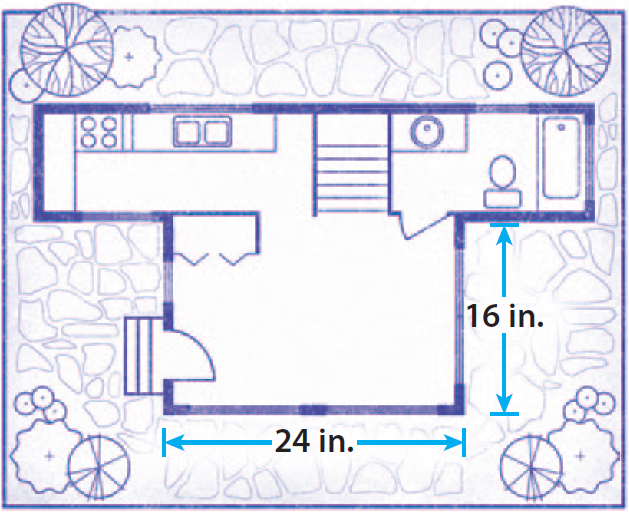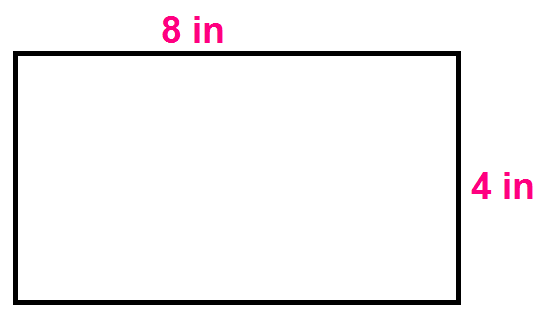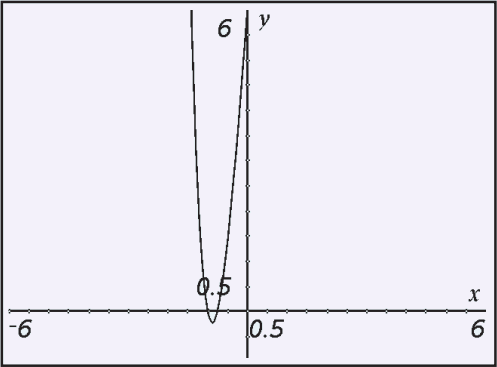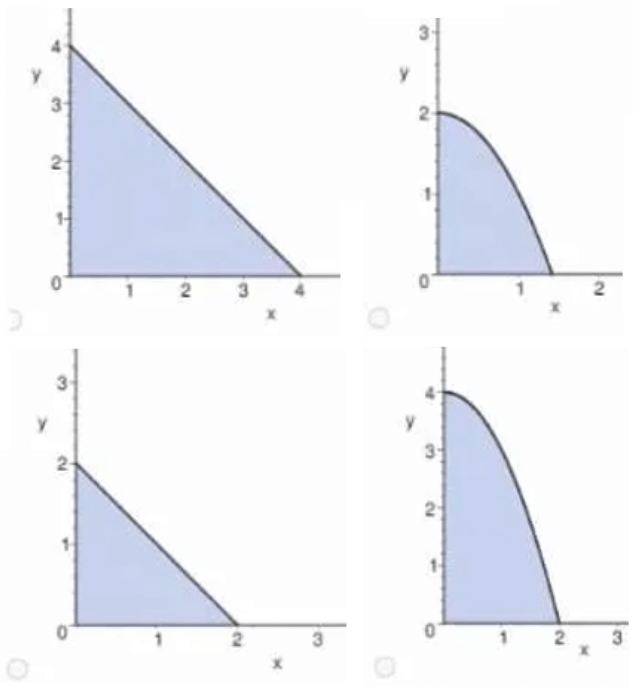MODELING GEOMETRIC FIGURES
When it comes to using geometry to solve real-world problems, we will learn how modeling our real-world problem with a common geometric shape can help us to easily solve the problem.
Example 1 :
Peter’s blueprint given below shows a layout of a house. Every 4 inches in the blueprint represents 3 feet of the actual house. One of the walls in the blueprint is 24 inches long. What is the actual length of the wall ?

Solution :
Let "x" be the original length of the wall in feet.
Step 1 :
Using scale factor, we have
4 inches -----> 3 feet
24 inches -----> x feet
Step 2 :
Let us proportion to solve for "x"
4 : 3 = 24 : x
or
4/3 = 24/x
Step 3 :
Simplify
4x = (24)(3)
x = (24)(3) / 4
x = (6)(3)
x = 18
So, the original length of the wall is 18 feet.
Example 2 :
David would like to make paint the rectangular shaped wall. The measures of dimensions of the wall is given in the picture using scale factor. In the picture given below, every 1 inch represents 3 feet of the actual length. If the cost of painting is $2.50 per square feet, find the total cost of painting for the entire wall.

Solution :
Scale factor : 1 in = 3 feet
Step 1 :
Find the length of the wall in feet.
Length = 8 inches
Length = 8 x 3 feet
Length = 24 feet
Step 2 :
Find the width of the wall in feet.
Width = 4 inches
Width = 4 x 3 feet
Width = 12 feet
Step 3 :
Find area of the wall in square feet.
Area of the wall = Length x Width
Area of the wall = 24 x 12
Area of the wall = 288 square feet.
Step 4 :
Find the total cost of painting for the entire wall.
Cost of painting per square feet = $2.50
Total cost of painting for the entire wall is equal to area of the wall times $2.50
= 288 x 2.50
= 720
So, the total cost of painting for the entire wall is $720
Kindly mail your feedback to v4formath@gmail.com
We always appreciate your feedback.
©All rights reserved. onlinemath4all.com
Recent Articles
-
Rational Root Theorem
Feb 06, 25 07:42 PM
Rational Root Theorem or Rational Zero Theorem - Concept - Examples -
How to Find Pythagorean Triplet from One Number
Feb 06, 25 06:10 PM
How to Find Pythagorean Triplet from One Number - Concept - Examples with step by step explanation -
AP Calculus AB Problems with Solutions (Part - 10)
Feb 06, 25 09:46 AM
AP Calculus AB Problems with Solutions (Part - 10)

